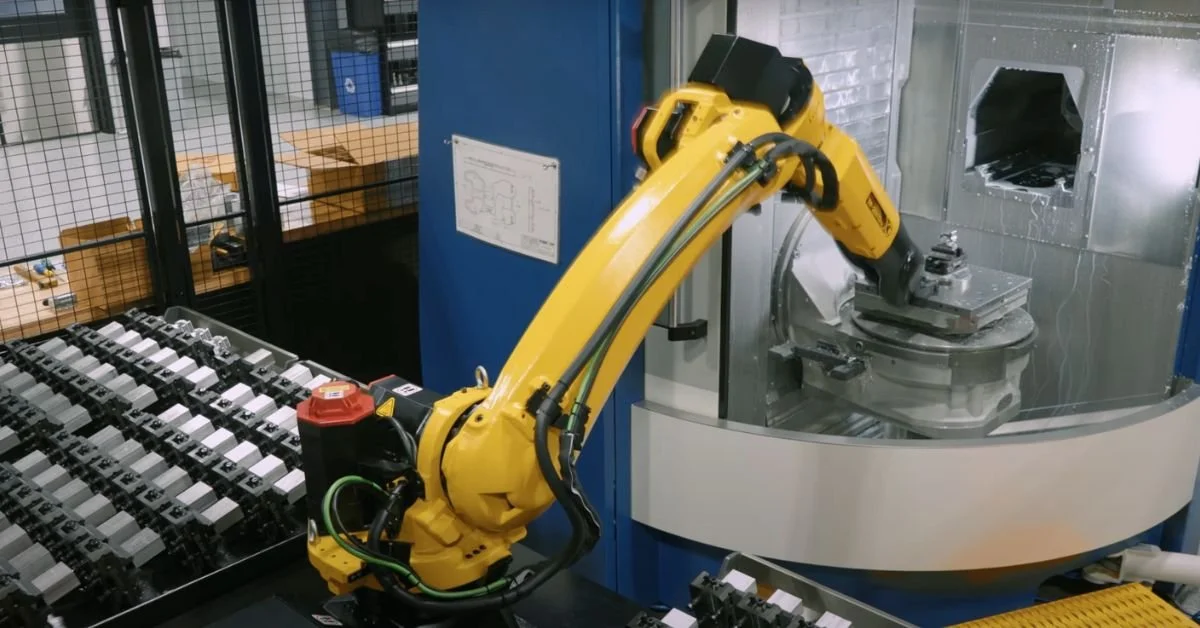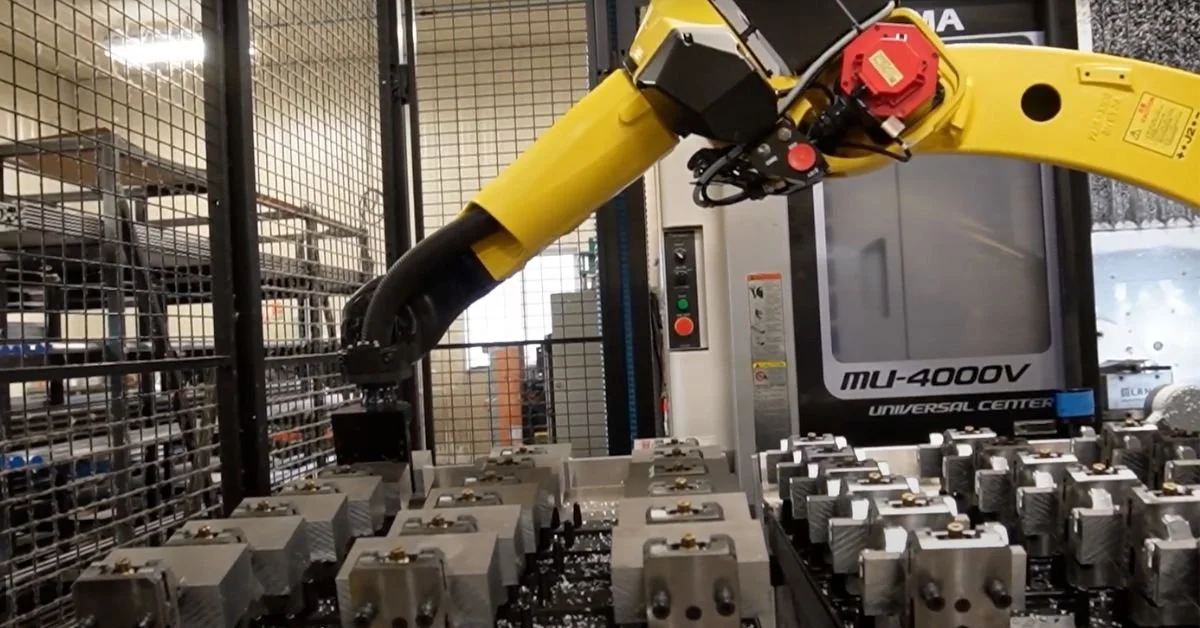CNC automation transforms your manufacturing operations and delivers measurable returns on investment. You gain competitive advantages through increased productivity, reduced labor costs, and improved quality control. Smart manufacturers recognize automation as the path to sustainable growth and profitability. If you’re considering whether to integrate CNC automation, but aren’t sure about its ROI, you need to know more about these critical factors so you can make confident investment decisions.
Labor Cost Reduction Drives Immediate Savings
Automated CNC systems significantly cut down on labor expenses by eliminating the need for multiple operators across shifts. These systems work tirelessly without needing breaks, sick days, or vacation time, ensuring uninterrupted production.
A single automated machine can handle repetitive tasks that would otherwise require several workers, particularly during long shifts or peak production periods. This reduction in labor costs often offsets the initial investment in automation within the first year, making it a financially sound decision for manufacturers aiming to optimize their operations.
Production Speed Increases Revenue Potential
CNC automation boosts manufacturing speed, allowing you to complete more jobs in less time while maintaining exceptional quality. Faster production cycles mean you can do the following:
Take on more orders
Meet tighter deadlines
Respond to customer demands quickly
For instance, a manufacturer using automated systems can fulfill bulk orders in weeks, compared to months with manual operations, directly increasing revenue potential.
Quality Improvements Reduce Waste and Rework
Automated CNC machines excel in delivering precision and consistency, eliminating the variability introduced by human error. This consistency results in tighter tolerances and improved product quality across all production runs.
An automated system cutting complex components can achieve millimeter-perfect accuracy in every piece, reducing material wastage and the need for rework. In turn, these improvements lead to significant material savings, higher profit margins, and a bolstered reputation for quality and reliability in the market.
Extended Operating Hours Maximize Asset Utilization
CNC automation enables “lights-out” manufacturing, where machines operate continuously without human supervision. This capability allows businesses to utilize their equipment around the clock, including nights and weekends, tripling productive capacity without increasing physical workspace or staff requirements. Factories running with automated systems can produce parts overnight, ensuring seamless inventory replenishment by the next morning.
Predictable Operating Costs Improve Financial Planning
Automated systems provide consistent and predictable operating expenses, making budgeting and financial forecasting much simpler. Unlike manual operations, where labor costs can fluctuate due to overtime or staff shortages, automation ensures stable costs. For example, some areas of your operation that become constant and predictable include the following:
Energy consumption
Maintenance schedules
Production output
This cost predictability can help businesses allocate resources more effectively and reduce financial uncertainty.
Skilled Labor Shortage Solutions Protect Your Business
As the manufacturing industry faces a growing shortage of skilled machinists, CNC automation offers a reliable solution. Automated systems reduce dependence on hard-to-find, highly trained workers while maintaining exceptional production standards. Automated systems can now take care of tasks that used to require years of expertise, such as machining complex parts. Automation ensures your business remains competitive and protected from workforce challenges.
Safety Improvements Reduce Insurance and Liability Costs
Automated CNC systems improve workplace safety by removing operators from hazardous environments. For example, the machine takes care of tasks involving sharp cutting tools or high-speed machinery, significantly reducing the risk of injuries. This safer work environment can lead to the following:
Lower workers’ compensation premiums
Fewer safety incidents
Easier OSHA compliance
When you invest in automation, you protect your workforce and enhance your safety record, which can further reduce insurance and liability costs.
Energy Efficiency Reduces Operational Expenses
Modern CNC automation systems are incredibly energy efficient, using advanced programming and intelligent motor control to optimize power consumption. For instance, these systems adjust energy usage based on production needs, reducing waste during idle periods. When you compare them to older manual equipment, you can see that automated machines deliver superior performance while consuming less energy, leading to lower costs and greater return on investment.
Material Utilization Optimization Cuts Raw Material Costs
Automated CNC programming maximizes material usage through precise nesting and cutting optimization. For example, advanced software calculates the most efficient layout for each sheet when working with expensive metals or alloys, minimizing waste. This intelligent toolpath planning reduces material waste percentages from double digits to low single digits.
Maintenance Predictability Prevents Costly Downtime
CNC automation systems provide detailed performance data, enabling predictive maintenance that prevents unexpected breakdowns. Sensors within the system monitor components in real time, alerting your team to potential issues before they escalate into costly failures. By scheduling maintenance proactively, you avoid unplanned downtime and the expenses associated with emergency repairs. This shift from reactive to predictive maintenance ensures consistent production schedules and reduces overall maintenance costs.
Data Collection Enables Continuous Improvement
Automated CNC systems generate valuable production data that you can analyze to identify optimization opportunities. For example, real-time monitoring can reveal bottlenecks in the production line, allowing you to adjust workflows for greater efficiency.
Additionally, tracking performance trends over time can help you make informed, data-driven decisions to improve quality and speed. This continuous improvement cycle ensures your operations remain competitive and adaptable to changing market demands.
Scalability Supports Business Growth
CNC automation systems are inherently scalable, allowing you to meet increased production demands without proportional increases in labor or overhead. Additional automated cells in your existing setup enable you to expand your production capacity without disruption. This scalability ensures that, as your business grows, your per-unit costs and quality standards remain consistent, giving you the confidence to take on larger contracts and new markets.
Customer Satisfaction Drives Repeat Business
Automated CNC systems consistently deliver high-quality products on time, exceeding customer expectations. With precision and reliability in every order, you build trust and loyalty among your clients. Satisfied customers are more likely to place repeat orders and recommend your services to others, driving sustainable business growth. Therefore, your ability to consistently meet or exceed expectations becomes a key differentiator in competitive markets.
Technology Investment Tax Benefits Reduce Net Costs
Investing in CNC automation comes with financial advantages, such as tax benefits and accelerated depreciation schedules. Under Section 179 deductions and bonus depreciation, businesses can write off a significant portion of their automation equipment costs.
These incentives reduce the overall financial impact of your investment, making it even more attractive. By taking advantage of these tax benefits, you effectively lower your net costs while strengthening your competitive position. Consult your accountant to ensure you’re maximizing these opportunities.
Here’s what you need to know: CNC automation delivers compelling ROI through multiple revenue-enhancing and cost-reducing mechanisms that transform your manufacturing operations. You gain sustainable competitive advantages while building a foundation for long-term growth and profitability.
The combination of labor savings, quality improvements, and operational efficiency creates powerful returns that justify your automation investment, and Metalcraft Automation Group’s CNC automation technology can help. Work with us, act now, and capture these benefits to position your business for continued success in an increasingly automated manufacturing landscape.



